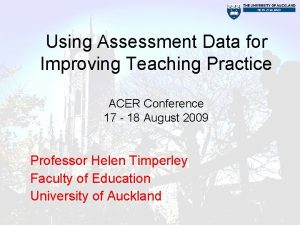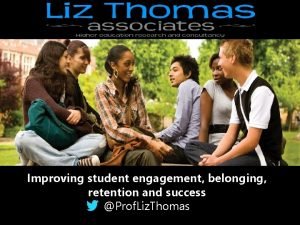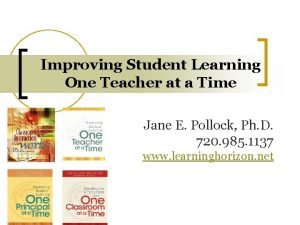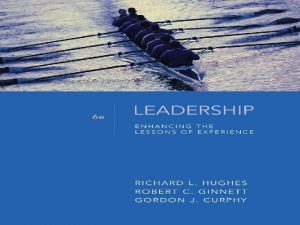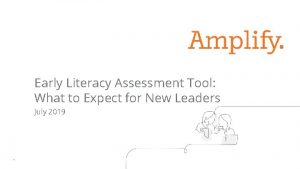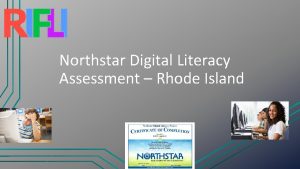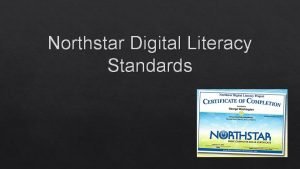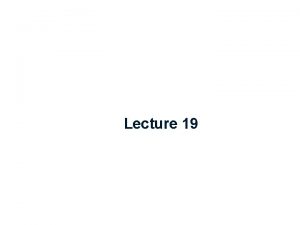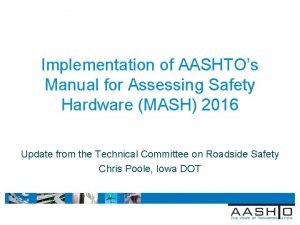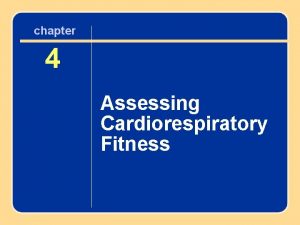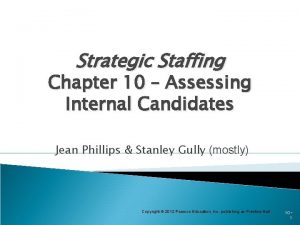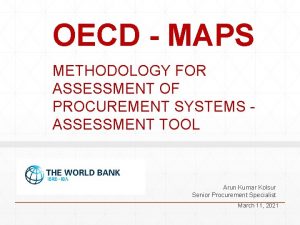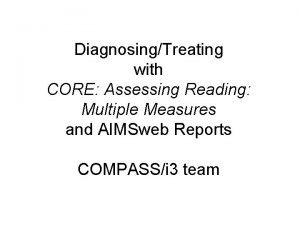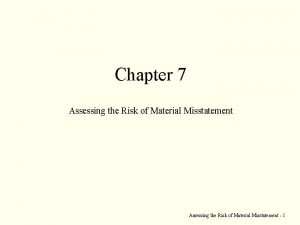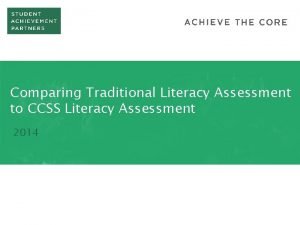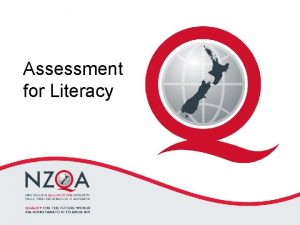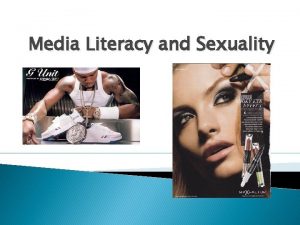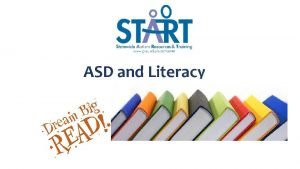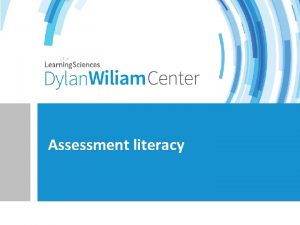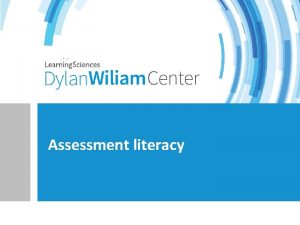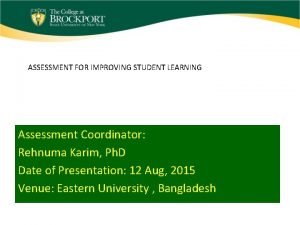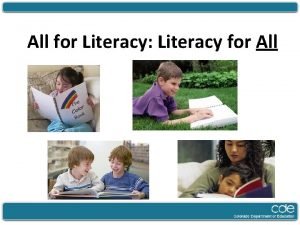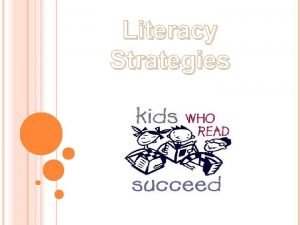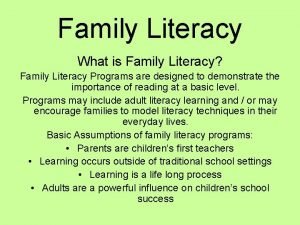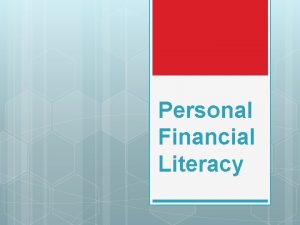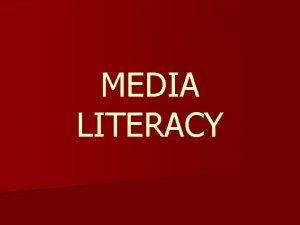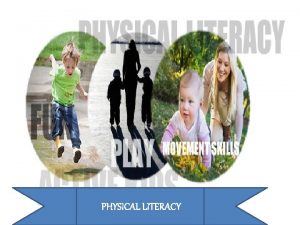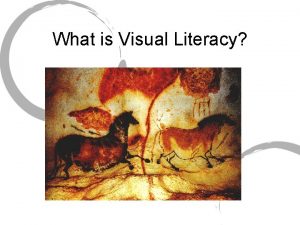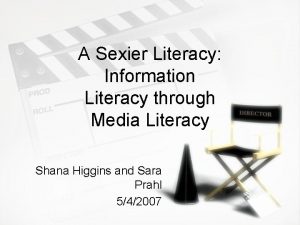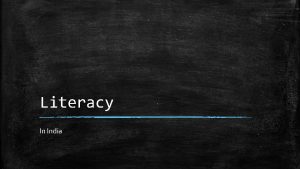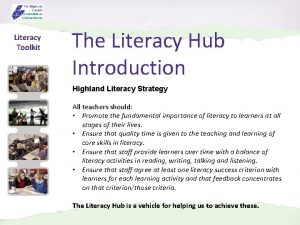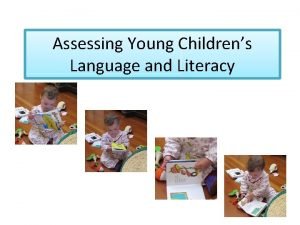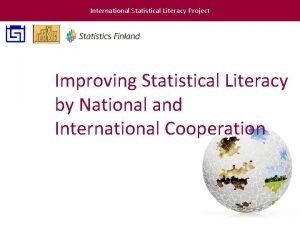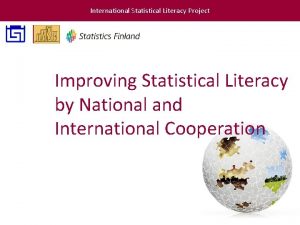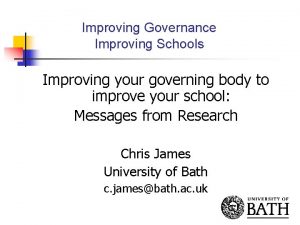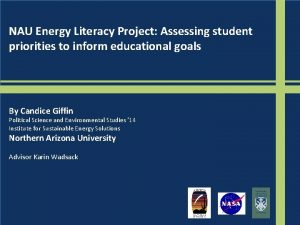Assessing Student Literacy Assessment Data and Improving Practice



























- Slides: 27

Assessing Student Literacy: Assessment Data and Improving Practice

School Context St Francis de Sales College is a Catholic Coeducational R-12 College in the Adelaide Hills with approximately 900 students. Our students come from a variety of socio economic backgrounds with some travelling from rural areas. Our school is divided into three sectors. The Junior School comprises Reception to Year 6, Middle School is Years 7 -9 and Senior School is Years 10 -12. As an R-12 College, a large emphasis is placed on the growth of students, throughout the duration of their learning journey, both academically and emotionally. Our school seeks to develop faith, respect and understanding through the teaching of our Catholic Identity and the development of our vision, to ‘Be who you are, and be that well’. As the Year 4 -6 Learning and Accountability (L&A) Leader at the school I focused predominately on the Year 4 -6 team which comprises of approximately 190 students and 10 staff.

Module 2: Authentic Assessment, Purpose and Design Assessment Task: Create and/or evaluate fit-for-purpose learning and assessment programs.

• Little choice specified in the learning plans • some did offer students alternative options to demonstrate their learning, such as an oral response, scribing scribe or use of use technology • Most reverted to written response as it was a consistent reliable form of collection • Assessment of learning rather than assessment for learning

• Created a new planning template R-6 • Focus on task design & addressing standards through WALT • Listing success criteria for students to follow & encourage staff moderation

Additions/Changes • WALT • Success Criteria • More streamlined

Focus on TASK DESIGN taken from Australian Curriculum Standards for Year Six Expected knowledge of text structure SUCCESS CRITERIA - selected by students and teachers based on prior knowledge

Students were encouraged to identify with success criteria set out by the teacher in line with the relevant standard while maintaining individual goals Teachers wanted to ensure that students could utilize the skills taught throughout the unit, particularly planning for a text Students were encouraged to use technology that suited the type of text they had created while allowing for differentiation

WALT Australian Curriculum Standards Differentiation Success criteria

• Learning teams using a ‘Backward Design’ model. • Discuss what the final assessment task will look like and align this to the Australian Curriculum Standards (not just content descriptors) as well as the teaching and learning plan. • List skills and criteria that each student needs in order to create a successful text then develop a plan based on skill development. • The multi modal element is intentional for two reasons. Firstly, it meets the standard, secondly, to create true differentiation, we believe that more students can be successful with the support of the right technology. However, the choice of technology is up to individual students. We believe this is important to maintain student voice and to enable students to choose and experiment with images and digital resources appropriate to purpose and audience as stated in the outcomes.

• In order to make learning transparent for students, we begin every/most lessons by identifying success criteria and learning intentions and then asking students to list two goals that they can work towards to support the success criteria (Hattie, 2005). We have since provided all classes with cues for this. • We also ensure that we revisit these goals at the end of each lesson for example; using a two stars and a wish model that asks students to list two things they did well or understood and one area they wish to improve or have question about. • This enables the students to self-evaluate their progress. Students become more accountable for their learning each lesson but it also ensures that learning intentions are clear and transparent. • Students and teachers can reassess if the criteria has been met to ensure that those who had not grasped a concept fully were able to get support from their peers, teachers or support staff.

Module 4: Assessment, Data and Improving Practice • We collect a significant amount of data about our students each year. Some relating to student learning through standardized testing, formative assessments and teacher observations, other data is based on demographics and student, staff and parent perception. • What we have found however is that although we collect a significant amount of data, this is not always reflected in the feedback provided to students and families. It is also not always used to directly support the teaching and learning that is taking place in classrooms.

Beginning the Case Study 1. Context 2. Focus 3. Action Plan 4. Findings and Recommendations 5. Evaluation

1. Context Our school follows the reporting guidelines as set out by Catholic Education South Australia. Currently, there is no assessment policy specific to our school. This is an area that we need to focus on in the coming year. The Australian Curriculum achievement standards are the reference point for assessment and reporting of learning areas at each year level. (http: //www. cesa. catholic. edu. au/our-schools/learning-teaching/assessment-reporting)

Translating data into priorities, goals and strategies requires that data are clearly linked to school-planning and decision-making processes, such that specific questions are answered, school goals are supported and problems are identified. ’ van Barneveld (2008, August) • With this in mind, my colleagues and I looked into the type of data we collect and how this can be used to provide more insight into our teaching practice. Hattie describes this well, stating that “teachers need to move away from achievement data as saying something about the student, and start considering achievement data as saying something about their teaching. ” (Hattie, 2005) • We began by using data to analyse and evaluate student understanding and are now working towards collecting multiple measures of data (Bernhardt, 1998) to evaluate our teaching and learning programs and provide effective feedback.

• This example shows a reading comprehension report card students in years 2 -9 receive after taking an online leveling quiz. • It is sent home to parents with a written comment explaining the areas of strength and areas for improvement. • At first glance, this student is doing very well, he is above benchmark for his year level and has taken 20 independent quizzes to develop his comprehension skills. • However, his average quiz level was 350 points below his ability level and he passed 14/20 quizzes. Indicating he was not challenging himself. • This report card in isolation is not a true reflection of this students’ abilities, nor does it give him effective feedback. • We have been working with staff this year, to use each report card as an opportunity to analyse and question with students how they perceive they are tracking and where they need to head from here. • We have also worked with staff to use this information to reflect on their teaching strategies to support students in their class.

2. Focus Timperley states very clearly that “data needs to provide teachers with curriculumrelevant information, ” and further states that this data “needs to be seen by teachers as something that informs teaching and learning, rather than as a reflection of the capability of individual students and to be used for sorting, labeling and credentialing. ” (Timperley, 2009) • We knew that we had a lot of data that could be useful to improve our pedagogical content and knowledge, however, this was not always adequately reflected in teaching and learning plans and pedagogical practice. • The data collected appeared to be a narrow representation of student achievement. What we needed was a more diverse set of data. • Bernhardt (1998), claims that over 50 percent of student achievement results can be explained by other factors, and that if we want to alter the results we are getting, we need to understand why we are getting the results we are getting and change what we do in order to get results.

Theory of Action My focus then, became a part of our developing theory of action and school wide ‘metaquestion’ or problem of practice: Can strategic assessment practices that are valid, reliable and accessible encourage a culture of independent learning and the pursuit of academic excellence? ’ Other Projects & Focus’ at the College • • • Numeracy Project Levelled Literacy Intervention (LLI) LLI Benchmarking Literacy Pro Theory of Action/Strategic Improvement Plan

3. Action Plan: Based on the Problem of Practice, we developed a series of propositions to guide us in using data to develop strategies to build pedagogical capacity in the selected focus group. Timperley describes this as teachers needing “improved pedagogical content knowledge to make relevant adjustments to classroom practice in response to the assessment information. ” (Timperley, 2009) • Unpacking LLI Program & LLI benchmarking – teachers trained to take a ‘running record’ & comprehension discussion – became staff moderation & most effective for data collection and informing practice • In order for students to receive valid, reliable, comparable and consistent judgments a considerable amount of conversation was required. • Literacy Pro – interpreting data • CEA Professional Development for R-12 staff

Proposition One: If Year 4 -6 teachers work in learning teams to develop assessment strategies that are valid, reliable and accessible, then student engagement will increase. Proposition Two: If school leaders and staff utilise a valid combination of perception, demographic, and academic data to reflect on teaching practice and organize planning, teaching, and learning strategies to meet areas of deficiency, then student growth, engagement, and wellbeing will improve.

4. Findings and Recommendations: What we discovered was that given the time to reflect on and engage with data sets, teachers became better equipped and more responsive to the needs of their students. But as Timperley explains, “teachers, cannot do this alone, but require system conditions that provide and support these learning opportunities in ways that are just as responsive to how teachers learn as they are to how students learn” (Timperley, 2009). This is a key factor in moving forward with this project.

Example: Year 2 -8 Lexile Growth for Terms 1 -3, 2016 • Our data tells us that there is certainly an improvement in our students reading levels. • This was reflected in our NAPLAN results but more importantly, teachers have a much broader knowledge of individual student’s abilities. • Teachers are able to use the data collected on Literacy Pro and in the LLI Benchmarking to articulate to parents, colleagues and administrators where a student sits within a reading continuum, what this means and how they will go about supporting student learning.

• Students themselves can also access this information and with effective feedback can work with teachers to show improvement. • Previously, students who were below benchmark had no way of measuring or understanding what this meant, how far below they may have been or what they needed to do to improve. • Interacting with and understanding the data has enabled teachers to provide students directly with more information.

• Student should be at 800 L to reach proficiency at Yr 6 • Adjustments to teaching, effective feedback & LLI support has shown improvement of 300 L • Ability to identify learning intention & success criteria provided motivation & achievable goal setting

Proposed Support: • Continued consistent practice across Year 4 -6 of clearly stating learning goals that are explicit and let students know what they are learning, why the learning is important, what products are expected, and how they will be assessed • Continued focus on Hattie’s work using Learning Intentions and Success Criteria to ensure that learning is visible and accessible to all students. (Hattie, 2005) • Theory of Action rolled out R-12 in 2017 – (this has since become a PLT with a focus on Jenny Gore’s Quality Teaching Rounds Framework) • Professional Learning Teams (PLT) to follow up with the meta question • Quality Rounds introduced R-6 to support pedagogical practice • Ongoing work with Literacy Data • Begin further work with Numeracy Data

• Moving forward, we intend to look at collating multiple measures of data (Bernhardt, 1998) in order to gain better insight into student perception data as well as parent perception data. • We also aim to work on implementing Professor Jenny Gore’s Quality Teaching Rounds for Professional Learning and Continuous Improvement to support teachers in pedagogical improvement. Through this, we intend to further support the system conditions that support teacher learning to develop a productive pedagogical framework. • We encourage teachers to continue asking ‘What is the data telling us about the efficacy of our teaching? ’ and ‘how can we use this to improve student learning? ’. • We intend to work further with Hattie’s learning intentions and success criteria as a means of challenging appropriateness, time, resources, and indicating “to other teachers and students (and parents) the level and depth of the learning. ” (Hattie, 2005)

5. Evaluation Using Hattie’s theory that “assessment data is optimised when teachers conceive such data as being about them rather than about the students” and that this should be a cue for teacher action, particularly teaching in a different way (Hattie, 2005) then I would suggest that this is the way forward for our College in 2017. • It remains an ongoing and developing project combined with the schools Theory of Action comprising of further data collection, Instructional Rounds and Quality Teaching Rounds. *since changed to PLT groups* • At the heart of the ongoing professional learning however is a deep understanding that an informed ability to use data to improve knowledge and “the best preparation for understanding and delivering effective and authentic assessment processes begins with designing high quality assessment tasks and instruments” (Teachers Guide to assessment).
 Using assessment data for improving teaching practice
Using assessment data for improving teaching practice A sense of belonging improving student retention
A sense of belonging improving student retention Improving student learning one teacher at a time
Improving student learning one teacher at a time Improving student learning one teacher at a time
Improving student learning one teacher at a time Media literacy vs information literacy
Media literacy vs information literacy M.i.l subject
M.i.l subject People in media and people as media difference
People in media and people as media difference Cyber literacy and digital literacy
Cyber literacy and digital literacy Teaching and assessing grammar in the writing classroom
Teaching and assessing grammar in the writing classroom Domain 5: assessment and reporting
Domain 5: assessment and reporting Informal and formal reading assessments
Informal and formal reading assessments Assessing a new venture's financial strength and viability
Assessing a new venture's financial strength and viability Assessing leadership and measuring its effects
Assessing leadership and measuring its effects Many new drivers first fender bender is a backing collision
Many new drivers first fender bender is a backing collision Module 4 topic 1 assessing and managing risk
Module 4 topic 1 assessing and managing risk Https //www.mclass.amplify.com/homeconnect
Https //www.mclass.amplify.com/homeconnect Northstar assessment
Northstar assessment Northstar digital literacy standards
Northstar digital literacy standards Btec sport level 3 unit 3
Btec sport level 3 unit 3 Unit 18 assessing children's development support needs p1
Unit 18 assessing children's development support needs p1 Assessing need for hrd
Assessing need for hrd Manual for assessing safety hardware
Manual for assessing safety hardware Chapter 4 cultural dynamics in assessing global markets
Chapter 4 cultural dynamics in assessing global markets Assessing cardiorespiratory fitness
Assessing cardiorespiratory fitness A nine box matrix requires assessing employees on ________.
A nine box matrix requires assessing employees on ________. Methodology for assessing procurement systems
Methodology for assessing procurement systems Core graded high frequency word survey
Core graded high frequency word survey While assessing the risks of material misstatement
While assessing the risks of material misstatement
